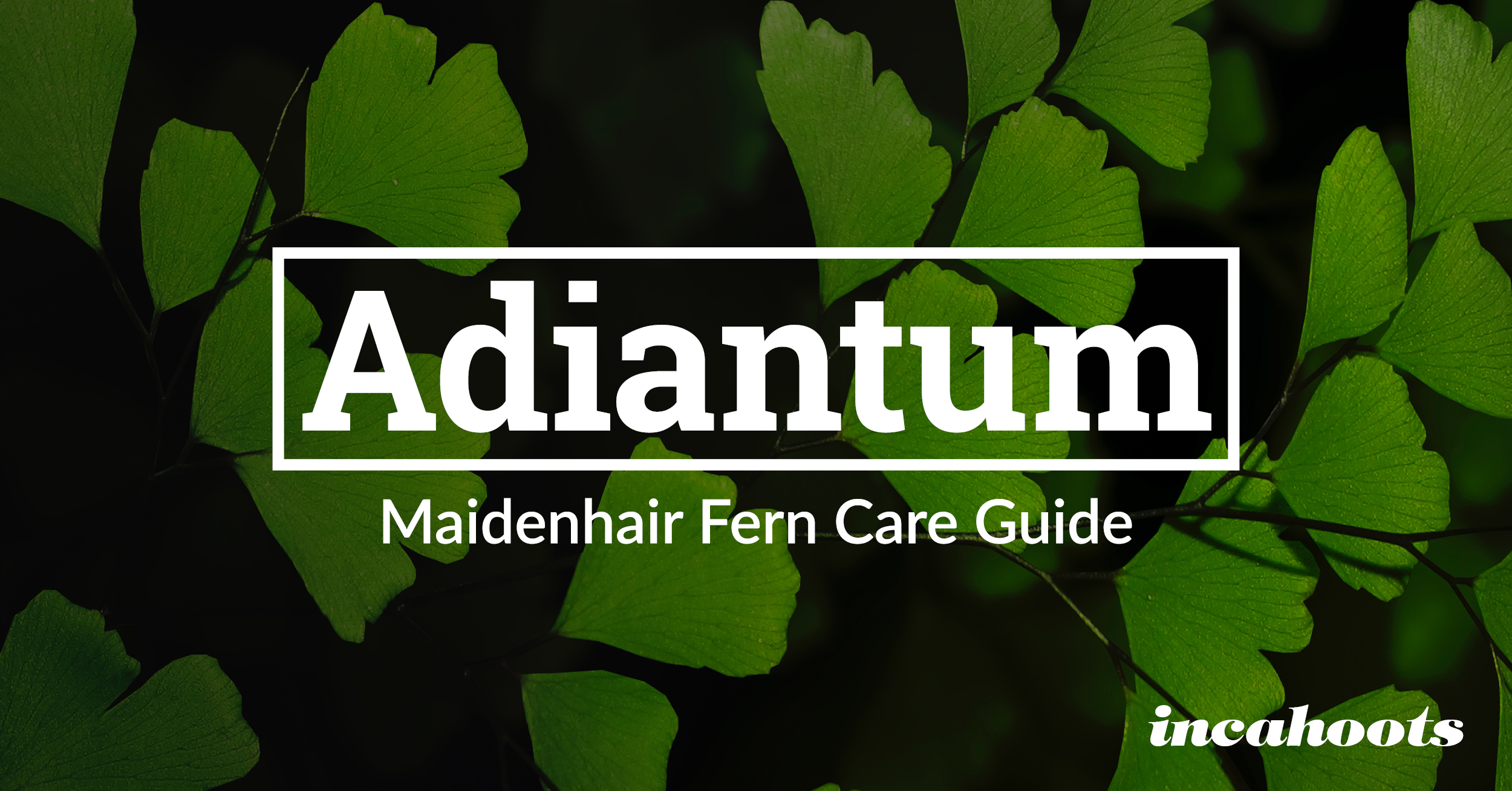Native to our very own Pacific Northwest (as well as most of the Northern United States), the Maidenhair fern belongs to the Adiantum genus. Its name is derived from the Latin word adiantos meaning “unwetting” which is rather fitting since it’s leaves repel water. Sharing this genus with over 200 varieties of fern, the maidenhair is a staple in many houseplant collections. In the wild they are known to grow in a variety of uncommon areas, such as the rocky bases of waterfalls and on rock walls, lending them to be considered “hardy” ferns. However, if you have ever tried to grow one of these bad boys, you know that they can be quite finicky to keep alive indoors. Keep reading for some of our best care advice and tricks for keeping these beautiful plants thriving in your home!
Watering
Thinking about where these beautiful babies grow in nature, it’s no surprise that they require a lot of water to be happy. Make sure that your soil stays consistently moist, never allowing your fern to dry out. You’ll see the negative side effects of this almost immediately in the form of crispy, shriveled up leaves. However, it’s imperative to make sure that your maidenhair does not sit in water. This could lead to root rot and overwatering issues. One way to tell if your fern has been overwatered is by keeping an eye out for yellowing leaves.
The best way to ensure that your maidenhair is getting its ideal watering conditions is to keep it in the plastic nursery pot that it came in. Planting in terracotta and clay materials leads to moisture wicking that will cause your plant to dry out faster. Leaving them in the nursery pot also ensures that your fern has proper drainage and never sits in water. If you don’t like the look of nursery pots, You can simply place it within a slightly larger, decorative cachepot! When watering, just make sure the plant has finished draining through before replacing it in the decorative pot.
Lighting
In nature, these plants are commonly found under the canopy of a forest, so they never come into contact with direct sunlight. It’s important to place your Adiantum in an area of your home where it will get bright, but indirect sunlight. Locations that receive too much direct sunlight will burn the delicate leaves to a crisp in a heartbeat. These plants would do wonderfully in a northern window where they would get bright morning and afternoon sun, but never anything direct.
Humidity
These ferns require quite a lot of humidity to keep their dainty little leaves soft and fresh. Placing these plants by a good quality humidifier is the best way to make sure that your adiantum is getting adequate humidity. If you’re unable to have access to a humidifier, placing your fern on a pebble tray filled with water can help assist, though make sure the area is warm so the water actually evaporates. Also ensure that you do not fill the pebble tray with so much water that your plant is sitting in water, this will lead to root rot and overwatering.
Fertilizer
While not a necessity, fertilizer can help your fern shoot out some new growth in the spring and summer. Using a well rounded, all-purpose fertilizer once a month during stages of active growth and every two months during dormancy periods will give your adiantum a little boost. Just make sure that your fertilizer doesn’t have a high nitrogen content (200 ppm or less) to avoid nutrient burn.

 Adiantum Care – The Maidenhair Fern
Adiantum Care – The Maidenhair Fern